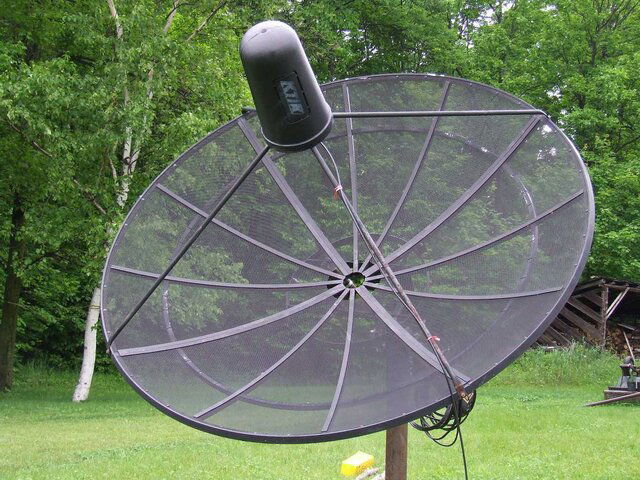In an earlier thread (Adventures while dish hunting) I mentioned a dish I had retrieved but had no pics since camera was dead. Here is an update.
The dish is a Kaul-tronics 6.5 foot. This is a bit puzzling, I see all kinds of references to the Kaul 7.5 but not a 6.5.
Some details:
Diameter 78", depth 12", focal distance 31.7", f/D is 0.406
Strings cross perfectly in the middle, no warp
Mesh is Ku compatible
While setting up I was having a hard time since I did not have my lnbf correctly oriented in the scalar ring for vertical polarity. The skew markings on the lnb case were evidently for H polarity. In order to find my south satellite I just swapped a Ku band lnb into the scalar ring and had no problem finding signals at 94% plus. No question this dish will get Ku!
Initial C-Band results good. Somewhat more sensitive to rain fade than the Channel Master 10 foot on the same bird which was expected, but generally pulls in a very decent signal. More experiments later when I have replaced the actuator with a good threaded rod system.
The dish is a Kaul-tronics 6.5 foot. This is a bit puzzling, I see all kinds of references to the Kaul 7.5 but not a 6.5.
Some details:
Diameter 78", depth 12", focal distance 31.7", f/D is 0.406
Strings cross perfectly in the middle, no warp
Mesh is Ku compatible
While setting up I was having a hard time since I did not have my lnbf correctly oriented in the scalar ring for vertical polarity. The skew markings on the lnb case were evidently for H polarity. In order to find my south satellite I just swapped a Ku band lnb into the scalar ring and had no problem finding signals at 94% plus. No question this dish will get Ku!
Initial C-Band results good. Somewhat more sensitive to rain fade than the Channel Master 10 foot on the same bird which was expected, but generally pulls in a very decent signal. More experiments later when I have replaced the actuator with a good threaded rod system.




 : I'll take an educated guess that alot of c band systems were never set up optimally, since analog had room to play. Digital especially with minimal error correction rates don't have that option and will tell you so bigtime. I've seen where even a small adjustment can make a big difference.
: I'll take an educated guess that alot of c band systems were never set up optimally, since analog had room to play. Digital especially with minimal error correction rates don't have that option and will tell you so bigtime. I've seen where even a small adjustment can make a big difference.